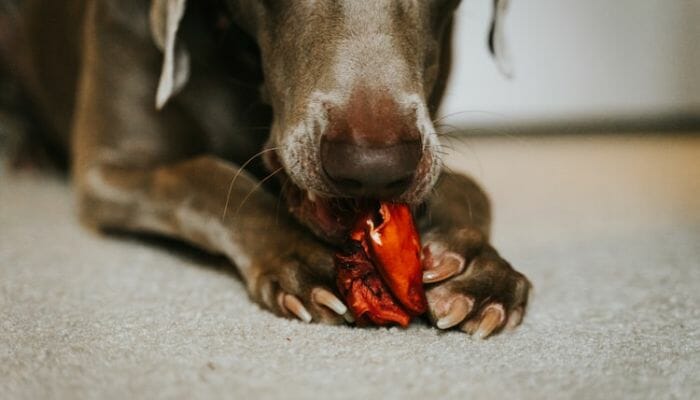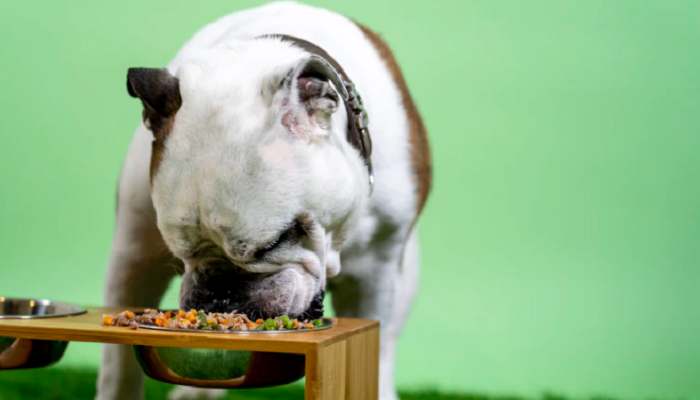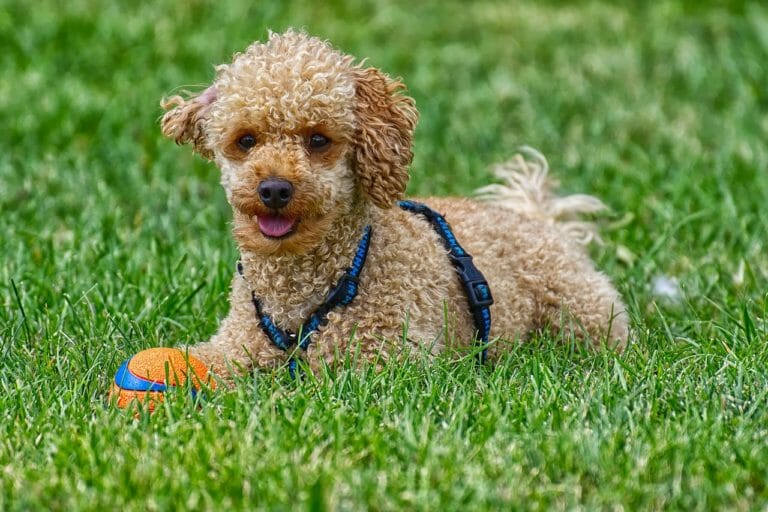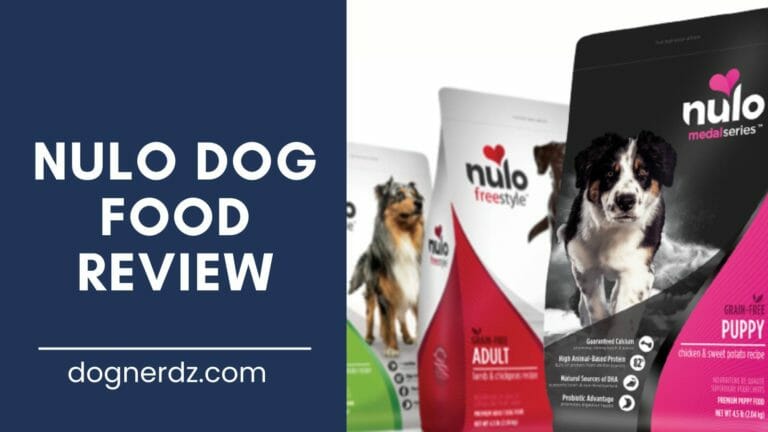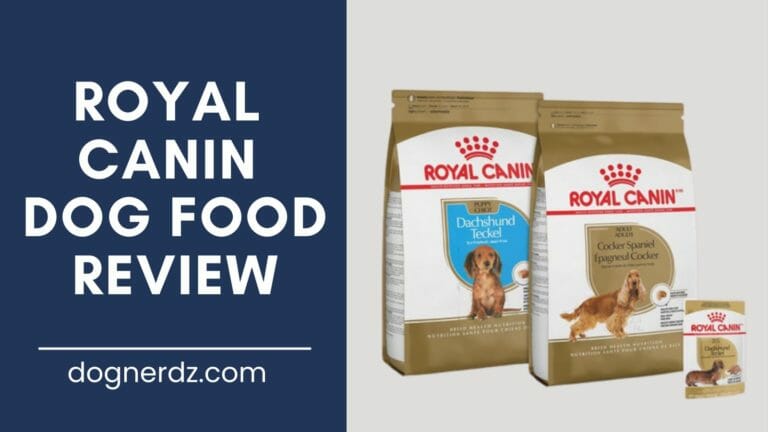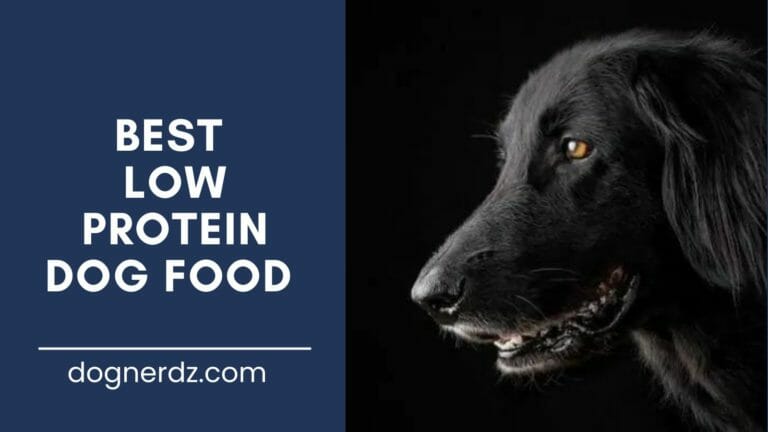How to Measure Dog Food Portions
Figuring out how much chow to give your furry friend isn’t as simple as it seems. It’s like piecing together a puzzle, considering their age, what kind of dog they are, how big or small they may be, and how much they run around. Give them too much, and you might end up with a chunky buddy. Give them too little, and they might be looking a bit too lean. Both can mess up your dog’s health big time, with being too heavy or too light just scratching the surface of potential issues.
A healthy amount of highly nutritious dog food is imperative to your canine’s development. We are going to take a close look at how much you should feed your dog and how to measure the right dog food portions.
Table of Contents
Why Is Portion Size Important?
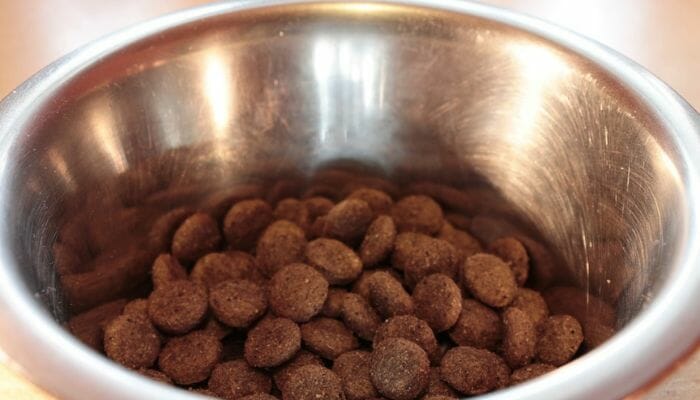
A lot of people eyeball the portions or feed their dog as much as they want to eat. Then, there are the dog owners with a different school of thought and prefer the free-feeding or grazing method. How you feed your dog his food is not the problem, the problem is how much.
Portion size is important because dog owners need to make sure their fur baby is betting all the nutrients they need for healthy development and avoid issues such as obesity, a shortened lifespan, and reduced quality of life from immobility. A malnourished dog is weaker and can suffer from Cushing’s disease and even skin disorders.
For a healthy and happy dog, make sure his kibble measurements are at the right amount.
How to Determine the Right Portion Size
It’s not just about breaking out your liquid measuring cup, there are other factors for pet owners to consider such as the breed size, age, activity level, and how many meals you feed. Luckily, your measuring skills won’t have to be put to the test because most dog food brands label their pet food with a recommended feeding guide.
The guide is easy to follow and should contain information such as the dog size, dog weight, and corresponding portion size. The amount should pertain to one day’s feeding, in other words, a 24-hour period. There might be stipulations outlined in the text for pregnant and nursing dogs. Potential mothers require a different diet regimen and sometimes it’s better to make food readily available for pregnant and nursing dogs.
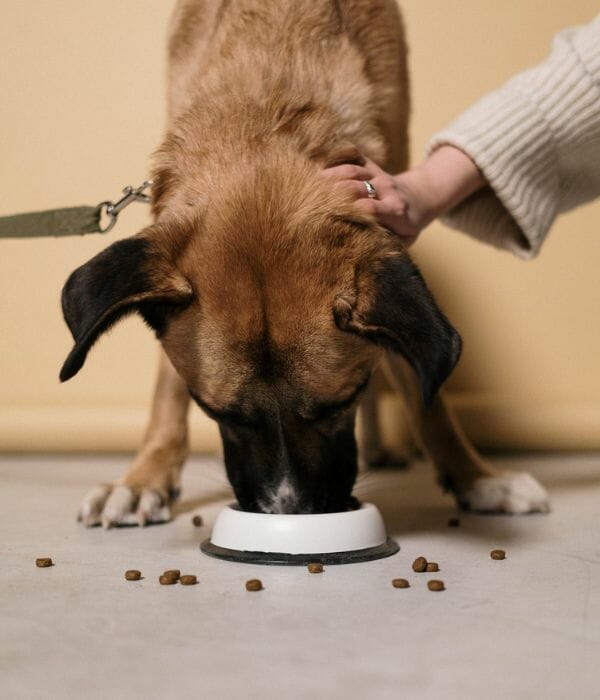
Adults typically require 2 meals a day while puppies and sometimes seniors need a smaller amount more frequently throughout 24 hours.
Below are some other factors to consider when figuring out the right portion size for your dog.
1. Energy Levels
Much like humans, a more rambunctious and active dog requires more food. Consider your dog’s lifestyle and adjust from there. A good rule of thumb is to follow the recommended diet plan on the bag. A sedentary dog might show a little extra weight over time and a very lively one could still want more food. Monitor your dog and tailor the amount accordingly.
2. Consider the BCS
The BCS, or Body Condition Score, is a system used by professionals to determine your dog’s figure. Typically, the BCS is divided into 9 categories.
Emaciated
In category 1, these dogs are severely underweight to the point where there is no body fat and even a lack of basic muscle mass. Dogs that are considered emaciated have often been abused and malnourished, or are strays or very sick dogs.
Very thin
A category 2, or very thin dog displays the same physicalities as an emaciated dog but possesses more muscle mass than the former. A very thin category 2 dog may still have protruding ribs, spine, and hips, but it may not be as obvious visually.
Thin
A thin dog in category 3 is similar to category two but has less visible bones.
Underweight
An underweight dog may not have visible bones, but they can be easily felt. A category 4 BCS dog has a nominal amount of fat and has a defined waist and concave stomach when viewed from the side.
Ideal
Category 5 is the ideal weight for a dog. You will still be able to feel the ribs under the skin, but you should notice a little bit of fat covering them. You can view the presence of a waist but less defined than category 4 and the abdomen is a bit fuller.
Overweight
Now we step into the heavier categories. In number 6, an overweight dog will have fat covering the ribs, but they can still be felt. The waist is less obvious as is the stomach tuck.
Heavy
If a dog is heavy, you will barely be able to feel for the ribs. They will be tucked under a layer of fat and you will notice fat deposits proportionally over your dog’s body. The waist and the tummy tuck will no longer be visible.
Obese
At this level, you won’t be able to feel the ribs anymore through petting. Only when you press and search for the ribs will you be able to find them under the fat layer. There will also no longer be a defined waist or stomach – in fact, they may protrude a little.
Severely Obese
At this point, we’re sure glad there isn’t a tenth category. This is when it’s obvious that a dog is heavy because there will be no definition, no visible waist or abdomen. Your dog will exhibit a broad stature and be soft to the touch.
Our experts suggest aiming for ideal for obvious reasons, but if your dog does fluctuate into category 4 or 6, there is little need for concern. The best person to help you determine your dog’s BCS is your vet.
3. Don’t Forget About Treat Intake
When determining the number of calories your pups need, many dog owners forget about factoring in the treats. These tasty rewards make up a portion of your dog’s daily caloric intake. Be consistent with how many treats you feed your dog to reach a more accurate conclusion. Even the Greenies you feed to help freshen his breath will also require a decrease in regular food portions.
4. Reassessment is Needed for New Food
When you switch your dog from puppy to adult food or adult food to senior food, you will need to reassess the portions. The adjustment is necessary even if you switch to new formulas. Different pet food brands will use varying ingredients, so each nutritional profile is different. Higher quality brands feature nutritionally dense dog food that won’t require as many cups as one low in quality.
5. How Old Are They?
Like we mentioned, the age of your pup will also influence the amount of dog food. What you feed your dog as a puppy will differ when he’s mature. As a rule of thumb, puppies eat more frequently at about 3-4 times a day. The amount of food during each feeding is also less.
When a dog ages, the amount of food increases, and the frequency decreases. Most adult dogs require 2 meals a day. If your senior dog has digestive issues, other health issues, or isn’t as active as before, then the amount of food will also decrease.
Related: 10 Best Dog Foods for Senior Dogs
6. The Breed and Size
The smaller the dog breed, the smaller the portion size and the more frequent the feedings are. For example, toy breeds may need up to 6 meals a day, whereas large breed fur babies can do with 3.
7. Overall Health
Just as with pregnant and nursing dogs, your pooch may need adjustments to his or her diet due to health reasons. If your dog is sick, your vet may recommend a certain type of food or as you to refrain from feeding treats. Before you take matters into your own hands, consult your trusted veterinarian before feeding your dog a prescription diet.
How to Measure the Right Amount of Food
10 calories off is not a big deal, but as pet parents, we want to avoid being inaccurate. We have some tips that will help all pet owners get a better grasp of portion measuring that won’t require a kitchen scale or measuring cup just yet.
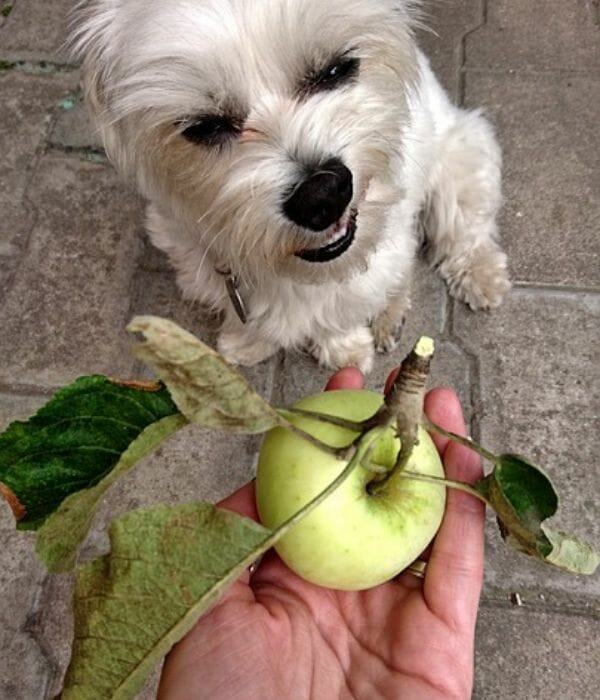
If your pooch is on a kibble diet, stick with it when measuring. It’s not enough to use the same scoop each time but maybe think about using a calorie calculator and investing in a set of measuring scoops to get the right feeding amount.
Once you have found a successful measuring technique, you should stick with it.
Trading the scale for a measuring cup and back again will result in inconsistent nutrient levels. To help with consistency, you can also think about measuring the entire day’s portion in one go.
Instead of going back and measuring each time, doing it at once proves to be more accurate. You might be wondering how you can measure separate three meals separately and keep them fresh or undetected by your dog.
Some dogs are avid eaters and won’t let even one kibble go. It can be hard to keep the food out of reach when he can sniff his lunch and dinner on the counter. A good way to keep the food fresh and away from your pooch is with proper storage. Look into a storage container or food storage bag.
Some math will be required on your part to come up with the right amount. Once owners have determined their dog’s BCS and daily caloric intake, then the calculations will come next.
Let’s say your dog is accustomed to eating 3 meals a day and he needs 600 calories per day (we used even numbers for easy division).
That would mean each meal would need to be 200 calories because 600/3 is 200. With a caloric counter and scale, you can meet the nutrient requirements of your dog with the correct volume.
Frequently Asked Questions
Is 1 cup of dog food enough?
1 cup of dog food may or may not be enough. There is no precise answer because no “cup” determined by pet food brands is the same. Some kibble is less nutrient-filled and will require a larger amount of food to match up to a nutrient-dense kibble. The best way to avoid weight gain or underfeeding your dog is to weigh it out. You will need to determine your dog’s body condition, then his daily calorie needs, and then determine how much food that is and split it between meals.
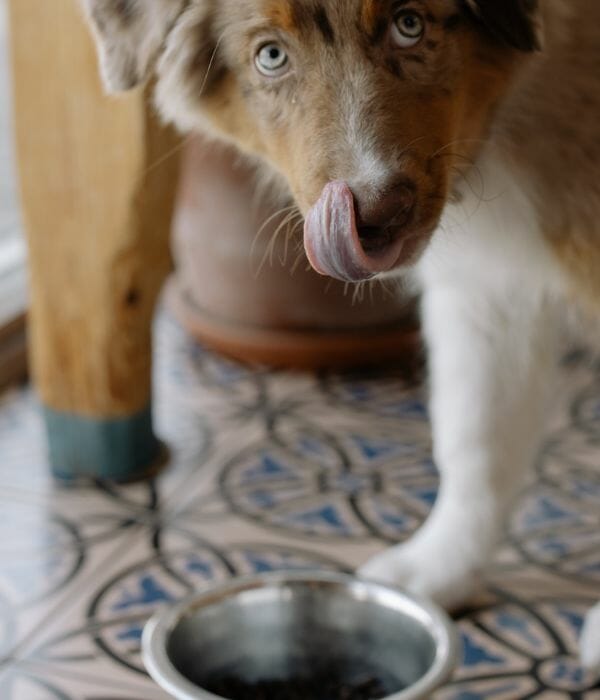
As if being a dog owner wasn’t hard enough with everything else we must consider, but keeping your dog at an ideal body weight requires time, practice, plus some math. But don’t worry, most well-known pet food brands will label the food with the weight of each cup.
It’s a little different with canned dog food because the calories are listed per can. To get the right amount, all you need to do is the math.
What is the serving size for homemade dog food?
If you make your own dog food, then you will have most likely consulted with your vet to assess your dog’s activity level, weight, feeding schedule, and other factors necessary to determine the right recipe. With that information, you can easily find the right serving size by calculating the total calories divided by the frequency of the feedings per day.
If you are with a subscription dog food plan, the company should send you the pet food already packaged in the right portion sizes for your pup. Before the subscription company creates the recipe, they will ask you a series of in-depth questions to find the right ingredients and amount.
We do not recommend attempting to create your own recipes without the help of a nutritionist or professional. Without the right knowledge, you may easily underfeed, overfeed or include ingredients harmful to your dog’s health.
How much does 1 cup of dry dog food weigh?
It’s difficult to give a precise number due to the kibble size and the overall weight of each piece, but generally, one cup of dry dog food is around 225 grams. Again, the accurate weight will depend on the brand of kibble.
How much and how often should you feed your dog?
There are a variety of concerns regarding the amount and frequency of feedings. Your dog’s age, breed, size, weight, and exercise levels are among the factors to consider. In general, a puppy will require less food more frequently, with toy breeds needing up to 6 meals a day. Larger breeds and puppies will require less kibble at only 2-3 times a day.
For the right amount, you need to first look at your dog’s Body Condition Score, or BCS, then take into account his physical traits and lifestyle to determine the recommended daily calories. Once you have that number, divide the number by how many meals you feed a day.
Conclusion
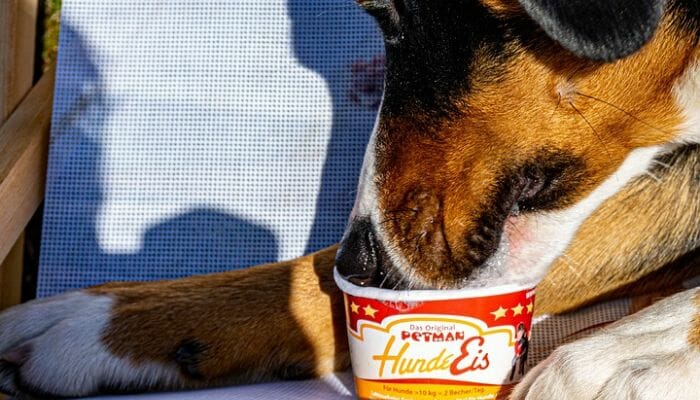
Always keep in mind that a dog’s nutritional needs may change throughout his life. Influencers for a change in the diet include health reasons, pregnancy or nursing, and age.
Sometimes you can get everything right with the measurements, the math, and the frequency, but your dog may still need more.
On some days when your dog is more active the need for food will also increase. It’s important to remember flexibility is key and to constantly monitor your dog.
Self-regulating canines may stop eating once they are full, and it is not a need for concern. However, there are many dogs out there that don’t know when to stop. Get to know your dog to understand him and take the necessary measure to ensure he gets the right amount of food to avoid malnutrition or obesity.
Expert Tip
Don’t forget dog food toppers. Some pups are picky eaters and this behavior will call for food toppers just to make the kibble more palatable and enticing. The addition of these seasonings will also increase the daily caloric intake, so be sure to factor that in when measuring the food.
Did You Know?
If you have multiple dogs, it’s important to not adopt the free-feeding method. Dogs that are avid eaters will gobble up all the food before the grazers have a chance at it.
This may also instill aggression in your pups and cause disagreements and maybe even fights during feeding. Instead, we recommend feeding each dog separately and keeping the other pooches away until each one is finished eating.

